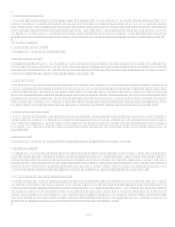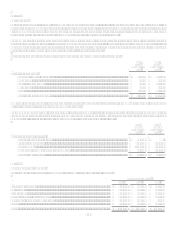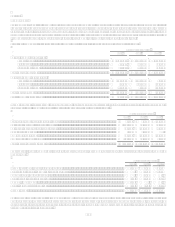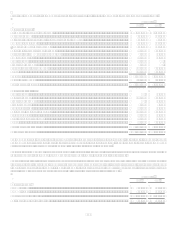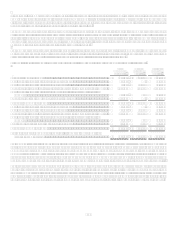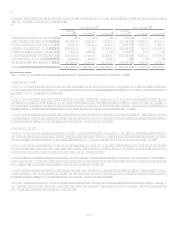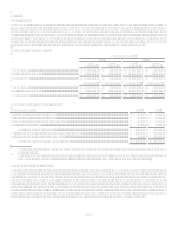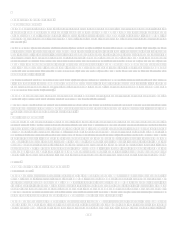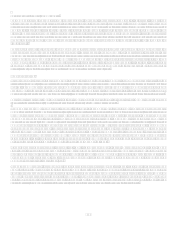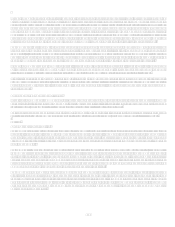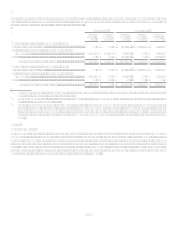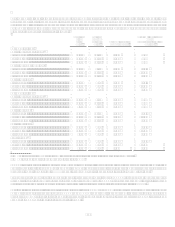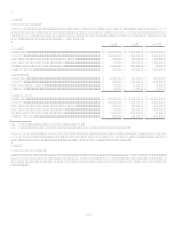Capital One 2008 Annual Report Download - page 158
Download and view the complete annual report
Please find page 158 of the 2008 Capital One annual report below. You can navigate through the pages in the report by either clicking on the pages listed below, or by using the keyword search tool below to find specific information within the annual report.
140
The remaining undivided interests in principal receivables and the related unpaid billed finance charge and fee receivables is
considered transferors interest which is retained by the Company and continues to be recorded as loans on the Consolidated Balance
Sheet as these loan receivables have not been sold to external investors. The amount of transferors interest fluctuates as the
accountholders make principal payments and incur new charges on the accounts. The amount of retained loan receivables,
representing transferors interest was $13.5 billion and $11.0 billion as of December 31, 2008 and 2007, respectively.
The Companys retained residual interests in the off-balance sheet securitizations are recorded in accounts receivable from
securitizations and are comprised of interest-only strips, retained senior tranches, retained subordinated tranches, cash collateral
accounts, cash reserve accounts and unpaid interest and fees on the investors portion of the transferred principal receivables. The
Companys retained residual interests are generally restricted or subordinated to investors interests and their value is subject to
substantial credit, repayment and interest rate risks on transferred assets if the off-balance sheet loans are not paid when due. As such,
the interest-only strip and retained subordinated interests are classified as trading assets in accordance with SFAS 155 and changes in
the estimated fair value are recorded in servicing and securitization income. Additionally, the Company may also retain senior
tranches in the securitization transactions which are considered to be higher investment grade securities and subject to lower risk of
loss. The retained senior tranches are classified as available for sale securities in accordance with SFAS 115 and changes in the
estimated fair value are recorded in other comprehensive income.
During 2008, the Company recorded a reduction in the interest-only strip of $224.8 million due predominately to increased credit
losses related to the off-balance sheet loans. Additionally, the Company held more retained residual interests either because of higher
enhancement levels required by the trusts for issuance of new securitizations or as part of our strategy to hold senior retained tranches.
These retained residual interests are subject to loss in the event assumptions used to determine the estimated fair value do not prevail,
or if borrowers default on the related off-balance loans and the Companys retained subordinate tranches are used to repay investors.
See the table below for key assumptions and sensitivities for retained interest valuations.
The gain on sale recorded from off-balance sheet securitizations is based on the estimated fair value of the assets sold and retained and
liabilities incurred, and is recorded at the time of sale, net of transaction costs, in servicing and securitizations income on the
Consolidated Statements of Income. The related receivable is the interest-only strip, which is based on the present value of the
estimated future cash flows from excess finance charges and past-due fees over the sum of the return paid to security holders,
estimated contractual servicing fees and credit losses. The Company periodically reviews the key assumptions and estimates used in
determining the value of the interest-only strip and other retained interests. The Company classifies the interest-only strip as a trading
asset in accordance with SFAS 155, and SFAS 115. The Company recognizes all changes in the fair value of the interest-only strip
immediately in servicing and securitizations income on the consolidated statements of income. In accordance with EITF 99-20 and
FSP EITF 99-20, the interest component of cash flows attributable to retained interests in securitizations is recorded in other interest
income.
Key Assumptions for Retained Interest Valuations
The key assumptions used in determining the fair value of the interest-only strip and other retained residual interests resulting from
securitizations of loan receivables completed during the period included the weighted average ranges for net charge-off rates, principal
repayment rates, lives of receivables and discount rates included in the following table. The net charge-off rates are determined using
forecasted net charge-offs expected for the trust calculated consistently with other company net charge-off forecasts. The principal
repayment rate assumptions are determined using actual and forecasted trust principal repayment rates based on the collateral. The
lives of receivables are determined as the number of months necessary to pay off the investors given the principal repayment rate
assumptions. The discount rates are determined using primarily trust specific statistics and forward rate curves, and are reflective of
what market participants would use in a similar valuation. Additionally cash reserve and spread accounts are discounted over the
estimated life of the assets.
Year Ended December 31
2008
2007
Weighted average life for receivables (months) ................................................................................... 7 to 8
8 to 9
Principal repayment rate (weighted average rate)................................................................................. 15% to 16% 15% to 17%
Charge-off rate (weighted average rate) ............................................................................................... 6% to 7%
4% to 5%
Interest-only strip discount rate (weighted average rate) ...................................................................... 12% to 18% 11% to 13%
Retained notes discount rate (weighted average rate)........................................................................... 10% to 15% 7% to 11%


